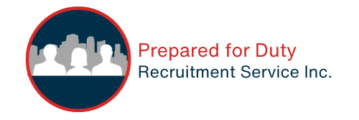Get Certified.
When seeking employment with a fire department, it is important to note that requirements for the position can vary. Some organizations and municipality may not require to have a fire and/or medical certification at the time of applying and will provide on-the-job training to help you attain the necessary qualification. Others may require specific minimum level of fire and/or medical certifications which you must have before applying.
Fire Certifications.
Employers who require fire certification from applicants are typically looking for individuals who hold the minimum NFPA 1001 Fire Fighter I & II certificate, with the International Fire Service Accreditation Congress (IFSAC) or the Pro Board seals.
Canadian Fire Rescue College (CFRC) can help you get the training and certifications you need.

Medical Training Certifications.
In addition to fire certification, many firefighter positions also require a minimum level of medical training. Typically, this includes qualifications such as Emergency Medical Responder(EMR) or Medical First Responder (MFR). These medical certifications equip firefighters with the necessary skills to provide initial medical care and support when first at the scene in emergency situations.
Having a higher level of medical training, particularly as an Advanced Care Paramedic (ACP), can enhance your chances of becoming a firefighter. Fire departments that operate integrated service, a combined fire and ambulance services, often seek candidate who possess advanced medical skills. There is an increased demand for candidates having these Advanced Care Paramedic skills and is highly sought after by these departments. Fire departments are willing to hire without fire certification and will provide the necessary training to obtain the NFPA 1001 certification.
- You must be register with the Alberta College of Paramedics
- Emergency Medical Responder (EMR),
- Primary Care Paramedic (PCP)
- Advanced Care Paramedic (ACP)
- Alberta College of Paramedic registration or provincial equivalent. If you are registered in another Canadian province, you may be eligible to apply for registration through Labour Mobility.
TIP:
Creating a job binder is an excellent way to stay organized and prepared for an interview. By keeping all relevant documents together, you can easily access them when needed. Here’s a suggested structure for your job binder:
Remember to keep your job binder updated regularly and replace any expired or outdated documents. By keeping everything in one place, you can avoid last-minute scrambling and ensure you are prepared and organized for your interviews.

